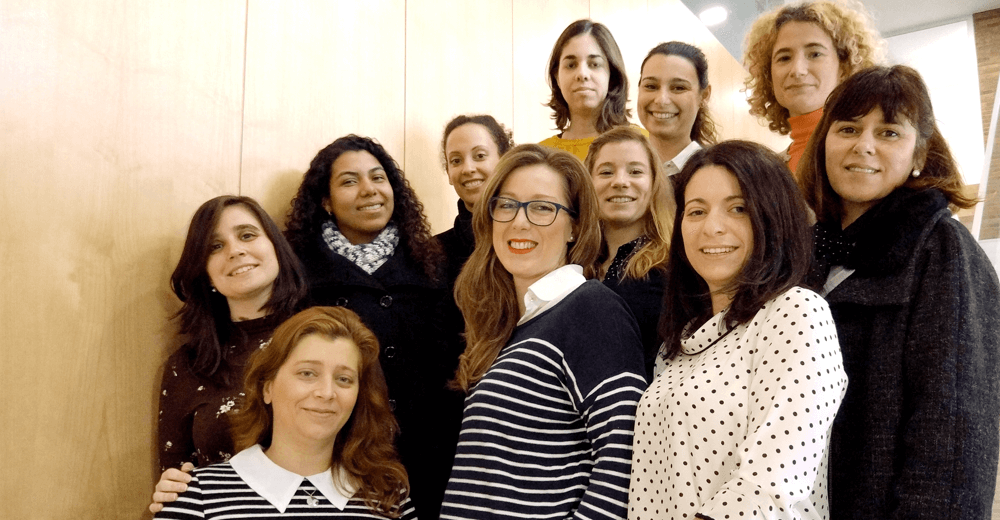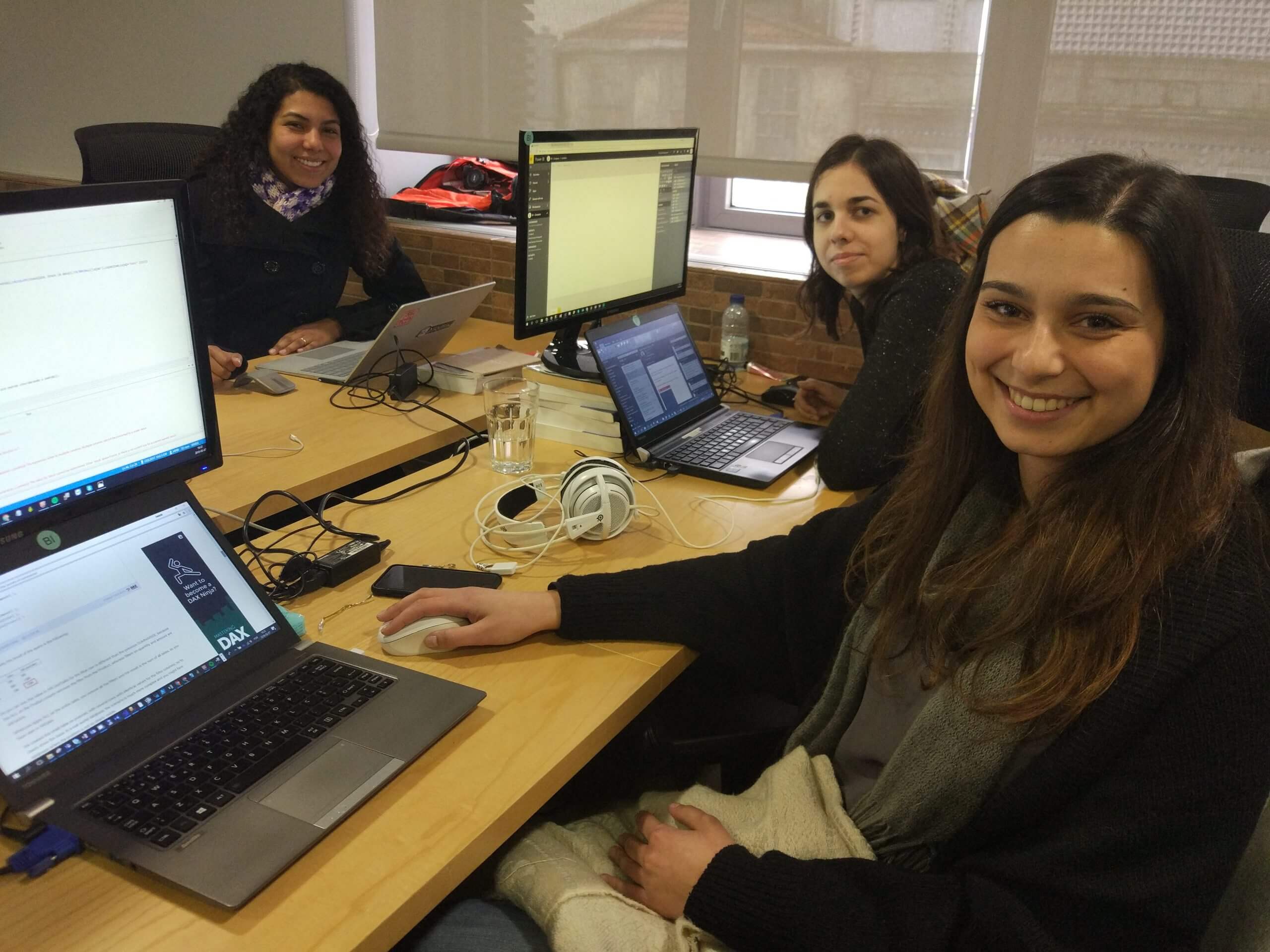The women of DevScope speak up

Joel Monteiro
March 8, 2018Along with Italy, Portugal is the 4th country in the European Union employing the least women in IT– a mere 14% of the sector’s workforce and falling. While some view this as a mere gender imbalance and a consequence of women preferring social and health (women account for 75% of all Portuguese students in these areas) over STEM courses (only 28% of STEM students in Portugal are female), others see a clear imbalance that needs to be addressed and corrected.
In celebration of International Women’s Day, we spoke to some of our colleagues in order to get the female perspective – actually, several female perspectives – on gender disparity in tech and what should be done to overcome it.

Why aren’t there more women in tech?
Despite all the recent progress – with women leading some tech giants such as IBM, Yahoo, or HP– closing the gender gap in IT is still somewhat of a mirage. In the last decades, tech became commonplace, but why aren’t there more women working in it? What’s holding them back?
“There’s a gender bias towards working in IT”.
Andreia Graça, one of our BI developers, feels that society is to blame. “There’s a gender bias towards working in IT”. She is not alone. Catarina Ricca, DevScope’s Product Owner, shares the same feeling. “There’s still a stigma attached to the fact that women in engineering are not feminine and not to be taken seriously.”

Numbers show they may be right. Despite being one of the most progressive countries in the world, Portugal was subject to an authoritarian regime that lasted until the mid-70s under which access to higher education was reserved to only a few, and gender roles dominated the workforce. Engineering was a men’s world, and many feel there is still some stigma attached to pursuing a career in any of its many areas.
Daniela Oliveira, Project Manager, disagrees though. “I don’t believe there’s any stigma surrounding women working in IT or any fears about pursuing a career in it. Sure, there’s a huge gap between genres but the same can be said about other areas such as health and education, where the disparity is even greater than in IT; but unlike IT, the percentage of women in these areas is much larger than men.” Tássia Lisboa, a BI Solutions Consultant with 10+ years’ experience, stands with her and feels like the lack of women in IT “is simply a matter of preference. Women tend to favor professions outside hard sciences.”
Data corroborates their opinion: the vast majority of new professionals working in health, education, and law are indeed women and so is the number of students.
“Nowadays, women are more willing to study IT since the area has greater awareness and perhaps due to the surplus of job offers.”
“A few years ago, IT was not an area of interest for women,” says Carolina Trigo, Project Manager and the most recent addition to the DevScope team. “Women leaned towards the humanities while men went for engineering. Nowadays, women are more willing to study IT since the area has greater awareness and perhaps due to the surplus of job offers.”
Despite the different arguments used to justify it, nobody denied that the gender gap in IT was very real. Joana Barbosa, one of DevScope’s most experienced BI developers, pointed out this may stem from childhood, a theory shared by several of her colleagues. “Society insists on directing children towards boy and girl stuff. Girls play with Barbie dolls while toy cars and Lego are for boys. Electronics, computers, and video games are for boys as well, so girls only find out about them at a much later age.”
“Games weren’t designed for girls because girls weren’t supposed to play them.”
Susana Silva, Project Manager & Business Analyst, builds on Joana’s theory. “The number of girls from my generation who owned a computer or video game console was very small – I was the only one in my neighborhood! Games weren’t designed for girls because girls weren’t supposed to play them. Culturally, women didn’t spend hours in Arcade rooms or in front of a TV screen playing on consoles.”

Software developer Ana Russo had a similar perception during childhood. “Boys played on consoles, and were more exposed to technology while girls played with dolls, something they were supposed to enjoy.” Despite that, Ana feels “Things are more balanced nowadays. Kids are so constantly exposed to tech it looks natural to them. Over the years, an interest regarding technology has grown among both genres.”
The future can be bright - with proper education
Ana’s words of optimism regarding future generations seem to echo with most of her colleagues. “With time and new areas popping up, the gender distribution of people working in IT will eventually even out,” says Andreia Graça. “I don’t think any measures need to be taken. Over the years, more women will eventually be working in this area.”
“IT is not for programmers only.”
Susana Silva suggests that in order to achieve this there should be an effort to show that “IT is not for programmers only. IT is also for talented people who manage technological changes, who manage teams, design apps, think about business problems, and find creative solutions for them. Once that’s clarified, the imbalance between men and women in roles such as Project Manager, Business Analyst, Web Designer, Data Scientist, and others won’t be as large.”

The current downward trend in women choosing IT as a career path may be in part attributed to the lack of perception that tech is so much more than just typing commands on a computer. Teachers, especially those who teach at a high school level, play a vital role in discovering their students’ strengths and exploring them. If teachers don’t show students how huge is the range of what they can do in IT, they’ll hardly pursue a career in the field.
“During graduation, I had the opportunity to learn from female teachers who were excellent on both a personal and a professional level.”
“During graduation, I had the opportunity to learn from female teachers who were excellent on both a personal and a professional level.” Ana Russo points out. “I still regard them as an example. They are smart, competent women whose work is regarded by both teachers and students. Great examples such as these should be publicized in order to show that women are leaders and influencers in IT as well.”
This move could certainly push more women to pursue STEM-related fields the same way they did with now female-dominated fields such as law and health. People choose careers based on their strengths and since school grades show us that girls do not fare worse than boys in math and science, educational guidance may indeed be to blame. The fact that Estonia and Romania lead the European race for gender parity in IT (with 29,6% and 28,9% of women in the workforce, respectively), can easily be explained by the tradition in studying STEM these countries inherited from the old Eastern Bloc, when all students, regardless of genre, were heavily encouraged to pursue applied mathematics and sciences.
There’s still plenty of road to travel but, hopefully, education will eventually even out the field and contribute to a bigger balance between genres in IT.

Congratulations to Pedro Sousa, the newest Microsoft Azure MVP!
Congratulations to Pedro Sousa, the newest Microsoft Azure MVP!
